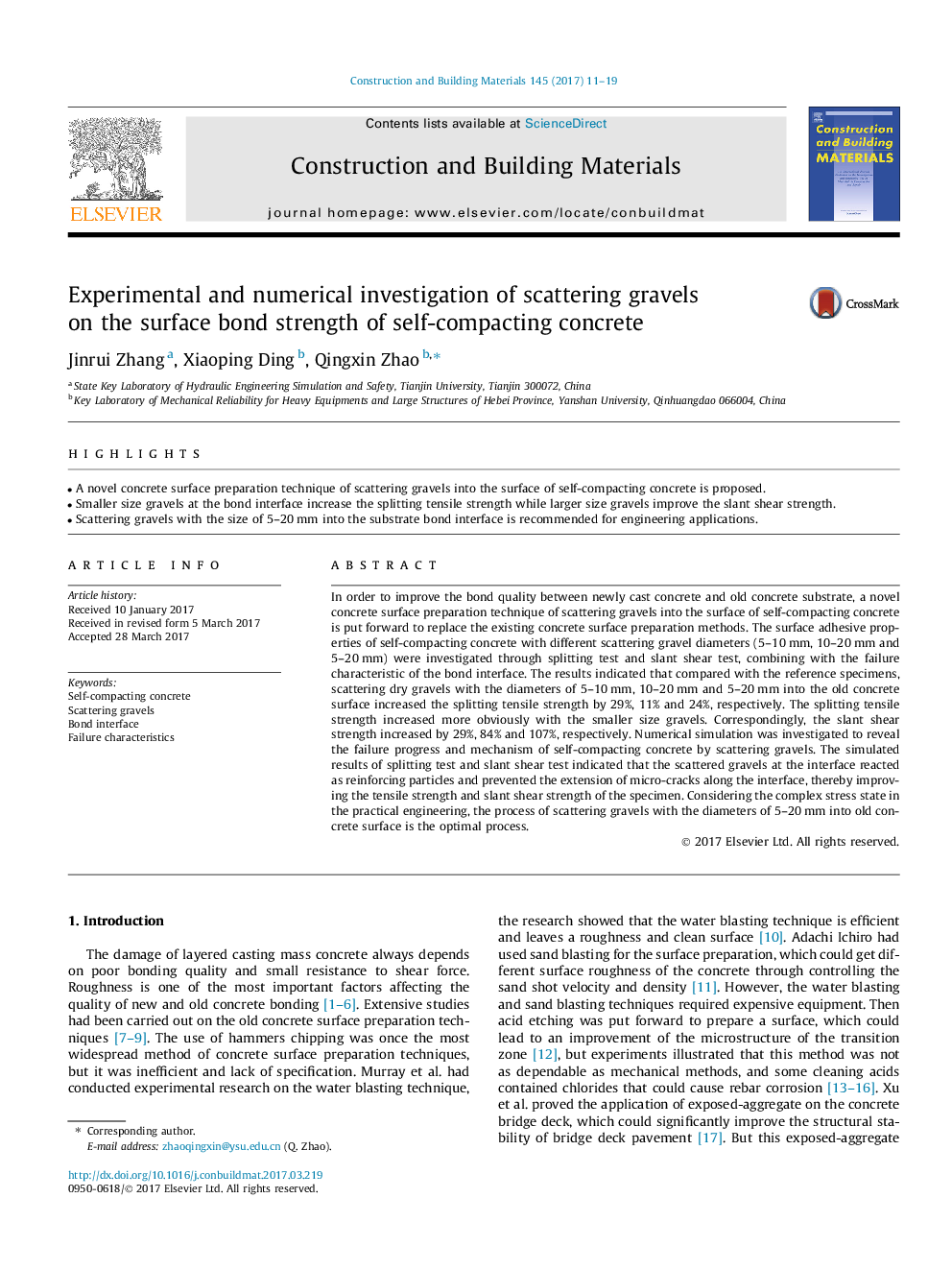| Article ID | Journal | Published Year | Pages | File Type |
|---|---|---|---|---|
| 4918360 | Construction and Building Materials | 2017 | 9 Pages |
Abstract
In order to improve the bond quality between newly cast concrete and old concrete substrate, a novel concrete surface preparation technique of scattering gravels into the surface of self-compacting concrete is put forward to replace the existing concrete surface preparation methods. The surface adhesive properties of self-compacting concrete with different scattering gravel diameters (5-10Â mm, 10-20Â mm and 5-20Â mm) were investigated through splitting test and slant shear test, combining with the failure characteristic of the bond interface. The results indicated that compared with the reference specimens, scattering dry gravels with the diameters of 5-10Â mm, 10-20Â mm and 5-20Â mm into the old concrete surface increased the splitting tensile strength by 29%, 11% and 24%, respectively. The splitting tensile strength increased more obviously with the smaller size gravels. Correspondingly, the slant shear strength increased by 29%, 84% and 107%, respectively. Numerical simulation was investigated to reveal the failure progress and mechanism of self-compacting concrete by scattering gravels. The simulated results of splitting test and slant shear test indicated that the scattered gravels at the interface reacted as reinforcing particles and prevented the extension of micro-cracks along the interface, thereby improving the tensile strength and slant shear strength of the specimen. Considering the complex stress state in the practical engineering, the process of scattering gravels with the diameters of 5-20Â mm into old concrete surface is the optimal process.
Related Topics
Physical Sciences and Engineering
Engineering
Civil and Structural Engineering
Authors
Jinrui Zhang, Xiaoping Ding, Qingxin Zhao,
